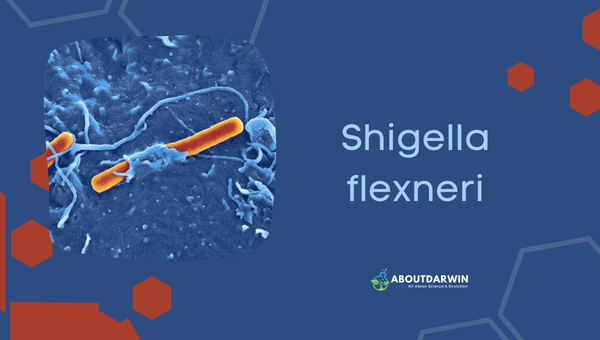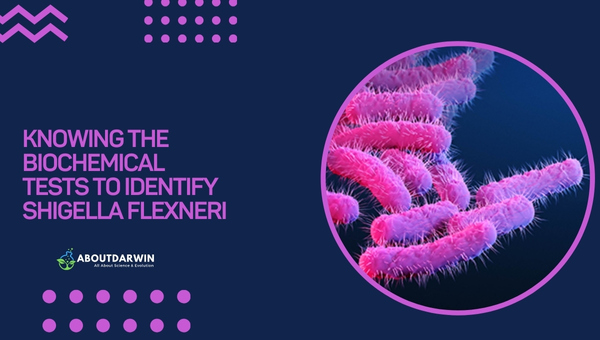Physical Address
304 North Cardinal St.
Dorchester Center, MA 02124
When I first heard the term ‘Shigella flexneri,’ it intrigued me. If you’re like me, not knowing what it meant probably left you curious as well. Shigella flexneri, as I discovered, is no alien term; rather, its discovery has deep-seated implications in medical microbiology and public health.
In this blog post, I will walk you through what Shigella flexneri is all about —including its impact on human health— and the crucial role biochemical tests play in identifying this bacterium. Don’t worry if you don’t have a background in medical microbiology; I’ll make sure we keep things simple and easy to understand!
As I delve into the intriguing world of biochemical testing for identifying Shigella flexneri, a bacteria often responsible for foodborne illnesses, several fundamental concepts and properties shape my understanding. For your convenience, I’ve drawn up a simple markdown table to illustrate these facets.
| Basic Characteristics | Properties (Shigella flexneri) |
|---|---|
| Growth in KCN | Negative (-ve) |
| Gelatin Hydrolysis | Negative (-ve) |
| Nitrate Reduction | Positive (+ve) |
| Gram Staining | Negative (-ve) |
| Oxidase | Negative (-ve) |
| Urease | Negative (-ve) |
| Catalase | Positive (+ve) |
| MR (Methyl Red) | Positive (+ve) |
| VP (Voges Proskauer) | Negative (-ve) |
| Gas | Positive (+ve) |
| H2S | Negative (-ve) |
| Motility | Non-Motile |
| Shape | Rods |
| Pigment | Negative (-ve) |
| Spore | Non-Sporing |
| Citrate | Negative (-ve) |
| Gelatin Hydrolysis | Negative (-ve) |
| Gram Staining | Negative (-ve) |
| Growth in KCN | Negative (-ve) |
Contents [hide]
As a biochemist, one of the most fascinating yet harmful bacteria I have encountered is Shigella flexneri.
This is not just a common bacterium; instead, it’s the culprit behind several cases of Shigellosis or Bacillary Dysentery. Originating from Japan in 1897, it has since been recognized as a global public health concern.

Shigella flexneri is found worldwide but tends to be more prevalent in developing countries. It thrives in conditions where personal hygiene is poor, and quality sanitation services are lacking.
In its ideal environment, this bacterium can cause symptoms like fever, stomach cramps, and diarrhea, which, if unchecked, can lead to serious consequences, including potential fatalities.
While there are four known subgroups within the Shigella species, S. flexneri stands out for both its genetic diversity and its predominance in less developed regions where access to clean water and adequate toilet facilities can be scarce.
This unique combination makes it particularly virulent and poses a robust challenge to clinicians trying to diagnose infections sourced from this bacterium accurately.
Also Read: Mastering Polymerase Chain Reaction: Principle & Application
When it comes to gastrointestinal chaos, few culprits can cause quite as much turmoil as the infamous Shigella flexneri.
Predominantly through contaminated food or water, this bacterium sneakily invades the human body, setting the stage for a rather unpleasant episode. Before the storm hits, let’s delve into the clinical manifestations this unseen adversary can trigger.
So next time you experience stubborn gastrointestinal symptoms, dubbing their cause on generic food poisoning might not be your safest bet! It could be down to our microscopic frenemy – Shigella flexneri.
To accurately diagnose and treat infections caused by Shigella flexneri, it’s vital to understand its identification through biochemical tests.

These tests, crucial in microbiology, offer a reliable way to determine the presence of this particular bacterium.
Understanding the microbial world, particularly pathogenic bacteria, is vital for public health. Shigella flexneri, a causative agent of bacterial dysentery, is identified and studied using several biochemical tests.
Here’s a brief overview of how these tests help in diagnosing and understanding the behavior of this tenacious pathogen.
The following information provides an encompassing overview of the various biochemical tests predominantly used in microbiology to identify the bacterial species Shigella flexneri. Known for causing shigellosis or “bacillary dysentery,” accurate identification of this organism is crucial for appropriate treatment and prevention strategies.
Other biochemical assays sensitive to Shigella species include oxidase test and urea hydrolysis. It’s also noteworthy that modern molecular techniques such as real-time PCR are being widely used due to their higher sensitivity and specificity when compared with traditional biochemical methods.
The cumulative results from these tests aid scientists in confirming a Shigella flexneri diagnosis, promoting a better understanding of the bacteria’s behavior, and ultimately applying this knowledge to craft targeted treatment plans.
For an accurate test, samples are generally collected from stool during the acute infection stage. The sample collection method must be hygiene-focused to prevent contamination.
The collected samples are cultured within a laboratory setting in selective media, which allows Shigella flexneri to grow while inhibiting the growth of other bacteria.
After the bacteria have grown on the culture media, individual colonies are isolated for further microscopic examination. They are studied for shape, size, and color characteristics specific to Shigella flexneri.
Shigella flexneri is then subjected to several biochemical tests, including the Indole test, the Methyl red test, the Voges-Proskauer (VP) test, and the Citrate utilization test. These tests work on the principle that different bacteria will respond differently under various biochemical conditions.
Suppose these tests produce a specific pattern of reactions that aligns with known results for Shigella flexneri (like negative reactions on all tests mentioned above). In that case, we can identify it as such.
Molecular methods like PCR or qPCR can also be used simultaneously for more speedy and accurate identification of this pathogen.
Also Read: Proteus Mirabilis: Understanding Biochemical Identification
Yes, DNA replication occurs before transcription in the cell cycle. During the S phase of interphase, cells replicate their DNA, ensuring that a complete copy of the genetic material is available to each daughter cell after cell division.
Transcription, the process of creating RNA from a DNA template, can then proceed during various phases of the cell cycle.
Diagnosis can be difficult as the symptoms often mimic other gastrointestinal diseases.
Emerging techniques, such as molecular-based tests, are promising for faster and more accurate identification.
It usually takes 24-48 hours, but it can depend on the specific test used.
Yes, like many bacteria, some strains have developed resistance to certain antibiotics.
Good hygiene practices and thorough food preparation are key preventative measures.
Also Read: Unraveling the Difference of Innate and Adaptive Immunity
In conclusion, identifying and understanding the pathology of Shigella flexneri is a critical task that can significantly impact public health. Enhanced knowledge about biochemical tests and modern molecular diagnostic techniques can help in promptly diagnosing, managing, and preventing infections due to this bacterium.
Furthermore, while biochemical tests remain important tools for pathogen identification, we need to update our testing strategies and prevention measures continually. Hence, continuing research is just as vital as our efforts on the ground to keep us a step ahead against this harmful organism.